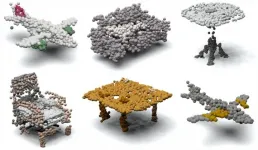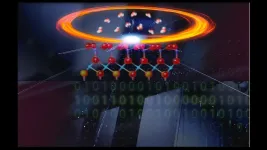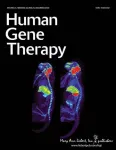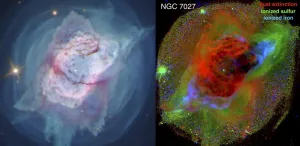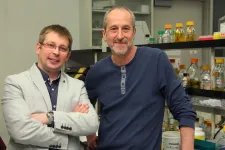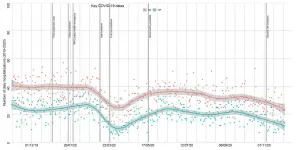Worker safety goes beyond human error
Perceptions of safety procedure quality and utility are the best predictors of workers' likelihood to comply, Texas A&M researchers found
2021-01-19
(Press-News.org) Disasters in high-risk industries can have catastrophic environmental, financial and human safety consequences. One way these industries help prevent and mitigate disasters is formal procedures designed to standardize how work is done. These procedures typically come in the form of a written document workers use while performing a task.
Camille Peres, associate professor at the Texas A&M University School of Public Health, said that there are two models of safety companies usually follow to varying degrees, whether they realize it or not. Safety model one "is very much a control paradigm," Peres said. "The idea the company has is that if they control absolutely everything that's going on, then they will be safe." This narrow, rule-following approach does not account for unexpected circumstances and broader system issues, such as safety climate.
Safety model two focuses on procedures as a tool for the worker, and the worker being sufficiently trained to know how and when to adjust to unforeseen circumstances.
"Safety model two involves empowering the workers to understand the risks and be able to adapt when necessary to unexpected situations," Peres said. "There is an acknowledgment that things don't always go according to plan, and there is constant feedback between workers and superiors about how best to accomplish work -- this often means improving procedures in an efficient and effective way."
Although safety model two seems like an effective way to prevent incidents from occurring, there has been little empirical evidence for it in the workplace. To fill this research gap, Peres and colleagues, including Joseph W. Hendricks, research associate at the School of Public Health, recently conducted a study to investigate how both safety models one and two influence safety in the workplace through individual and system-level characteristics.
Individual characteristics include amount of work experience, attitude toward procedure utility (or usefulness), and attitude toward procedure compliance. System-level characteristics include worker subjective judgments of procedure quality, safety climate, the efficiency of the procedure change process and the impact of procedure improvement.
The researchers' main findings were that the better the worker's attitude toward compliance and the utility of procedures, and fewer years' experience, the less likely they are to deviate from and actually use procedures.
Further, the researchers found that of the individual-level characteristics, attitudes toward procedure utility were found to be the best predictor of incidents and near-misses, suggesting that the better workers' attitudes regarding procedure utility, the fewer incidents and near-misses they were involved in per year.
"To have utility associated with incidents and near misses is a big deal," Peres said. "This tells industry that it's not enough to have high quality procedures -- you have to have procedures that help workers do their jobs." Specifically, they found that utility was the best predictor of procedure use, even after accounting for procedure quality.
As found in other studies, procedure quality was found to be important. The better the quality of the procedure, the fewer deviations there are, resulting in fewer incidents and near-misses per year.
This study is unique in that it demonstrates procedure quality to be a better predictor than all other predictors -- including individual characteristics. This supports the safety two model, as it suggests that the characteristics of the workers are not what is most predictive of procedure use, procedure deviation, incidents and near misses.
Peres said the study is not advocating for the abandonment of safety model one, but rather for the two models to be used together so that individual and system-level factors can be taken into account to design more effective procedural systems.
Further studies are needed to compare workers' performance in different experimental conditions. It will also be necessary to conduct longitudinal studies to determine how these variables change over time. Peres and Hendricks are working with industry partners as part of the Next Generation Advanced Procedures Consortium to conduct these studies.
INFORMATION:
Safety Science link: END
ELSE PRESS RELEASES FROM THIS DATE:
2021-01-19
Before he joined the University of Texas at Arlington as an Assistant Professor in the Department of Computer Science and Engineering and founded the Robotic Vision Laboratory there, William Beksi interned at iRobot, the world's largest producer of consumer robots (mainly through its Roomba robotic vacuum).
To navigate built environments, robots must be able to sense and make decisions about how to interact with their locale. Researchers at the company were interested in using machine and deep learning to train their robots to learn about objects, but doing so requires a large dataset of images. While there are millions of photos and videos of rooms, none were shot from the vantage point of a robotic vacuum. Efforts to train using images with human-centric perspectives failed.
Beksi's ...
2021-01-19
Following a series of studies on termite mound physiology and morphogenesis over the past decade, researchers at the Harvard John A. Paulson School of Engineering and Applied Sciences have now developed a mathematical model to help explain how termites construct their intricate mounds.
The research is published in the Proceedings of the National Academy of Sciences.
"Termite mounds are amongst the greatest examples of animal architecture on our planet," said L. Mahadevan, the Lola England de Valpine Professor of Applied Mathematics, of Organismic and Evolutionary Biology, and ...
2021-01-19
Computer simulations hold tremendous promise to accelerate the molecular engineering of green energy technologies, such as new systems for electrical energy storage and solar energy usage, as well as carbon dioxide capture from the environment. However, the predictive power of these simulations depends on having a means to confirm that they do indeed describe the real world.
Such confirmation is no simple task. Many assumptions enter the setup of these simulations. As a result, the simulations must be carefully checked by using an appropriate "validation protocol" involving experimental measurements.
"We focused on a solid/liquid interface because interfaces are ubiquitous in materials, and those between oxides and water are key in many energy applications." -- Giulia Galli, theorist ...
2021-01-19
New Rochelle, NY, January 19, 2021--Gene editing therapies, including CRISPR-Cas systems, offer the potential to correct mutations causing inherited retinal degenerations, a leading cause of blindness. Technological advances in gene editing, continuing safety concerns, and strategies to overcome these challenges are highlighted in the peer-reviewed journal Human Gene Therapy. Click here to read the full-text article free on the Human Gene Therapy website.
"Currently, the field is undergoing rapid development with a number of competing gene editing strategies, including allele-specific knock-down, base editing, prime editing, and RNA editing, are under investigation. Each offers a ...
2021-01-19
ITHACA, N.Y. - When the semester shifted online amid the COVID-19 pandemic last spring, Cornell University instructor Mark Sarvary, and his teaching staff decided to encourage - but not require - students to switch on their cameras.
It didn't turn out as they'd hoped.
"Most of our students had their cameras off," said Sarvary, director of the Investigative Biology Teaching Laboratories in the College of Agriculture and Life Sciences (CALS).
"Students enjoy seeing each other when they work in groups. And instructors like seeing students, because it's a way to assess whether or not they understand the material," Sarvary said. "When we switched to online learning, that component got lost. We wanted to investigate the reasons ...
2021-01-19
Scientists have combined NASA data and cutting-edge image processing to gain new insight into the solar structures that create the Sun's flow of high-speed solar wind, detailed in new research published today in The Astrophysical Journal. This first look at relatively small features, dubbed "plumelets," could help scientists understand how and why disturbances form in the solar wind.
The Sun's magnetic influence stretches billions of miles, far past the orbit of Pluto and the planets, defined by a driving force: the solar wind. This constant outflow of solar material carries the Sun's magnetic field out into space, where it shapes the environments around Earth, other worlds, and in the reaches of deep space. Changes in the solar wind ...
2021-01-19
Images of two iconic planetary nebulae taken by the Hubble Space Telescope are revealing new information about how they develop their dramatic features. Researchers from Rochester Institute of Technology and Green Bank Observatory presented new findings about the Butterfly Nebula (NGC 6302) and the Jewel Bug Nebula (NGC 7027) at the 237th meeting of the American Astronomical Society on Friday, Jan. 15.
Hubble's Wide Field Camera 3 observed the nebulae in 2019 and early 2020 using its full, panchromatic capabilities, and the astronomers involved in the project ...
2021-01-19
New high-resolution structures of the bacterial ribosome determined by researchers at the University of Illinois Chicago show that a single water molecule may be the cause -- and possible solution -- of antibiotic resistance.
The findings of the new UIC study are published in the journal Nature Chemical Biology.
Pathogenic germs become resistant to antibiotics when they develop the ability to defeat the drugs designed to kill them. Each year in the U.S., millions of people suffer from antibiotic-resistant infections, and thousands of people die as a result.
Developing new drugs is a key way the scientific community is trying to reduce the impact of antibiotic resistance.
"The first thing we need to do to make improved drugs is to better understand how antibiotics work and how 'bad ...
2021-01-19
Data analysis is revealing a second sharp drop in the number of people admitted to hospital in England with acute heart failure or a heart attack.
The decline began in October as the numbers of COVID-19 infections began to surge ahead of the second lockdown, which came into force in early November.
The findings, from a research group led by the University of Leeds, have been revealed in a letter to the Journal of the American College of Cardiology.
The decline - 41 percent fewer people attending with heart failure and 34 percent with a heart attack compared to pre-pandemic levels ...
2021-01-19
The human brain has about as many neurons as glial cells. These are divided into four major groups: the microglia, the astrocytes, the NG2 glial cells, and the oligodendrocytes. Oligodendrocytes function primarily as a type of cellular insulating tape: They form long tendrils, which consist largely of fat-like substances and do not conduct electricity. These wrap around the axons, which are the extensions through which the nerve cells send their electrical impulses. This prevents short circuits and accelerates signal forwarding.
Astrocytes, on the other hand, supply the nerve cells with energy: Through their appendages they come into contact with blood vessels and absorb glucose from these. ...
LAST 30 PRESS RELEASES:
[Press-News.org] Worker safety goes beyond human error
Perceptions of safety procedure quality and utility are the best predictors of workers' likelihood to comply, Texas A&M researchers found
